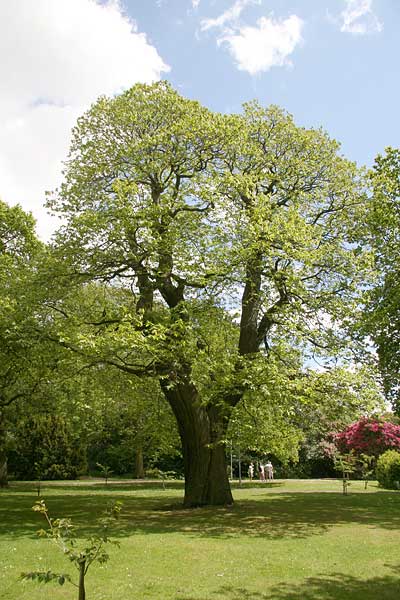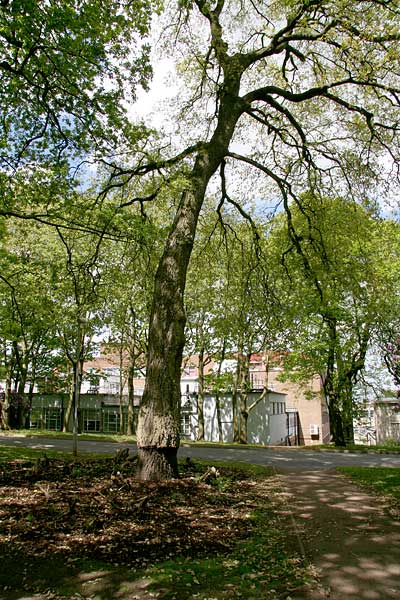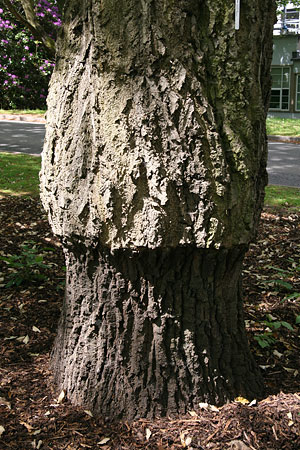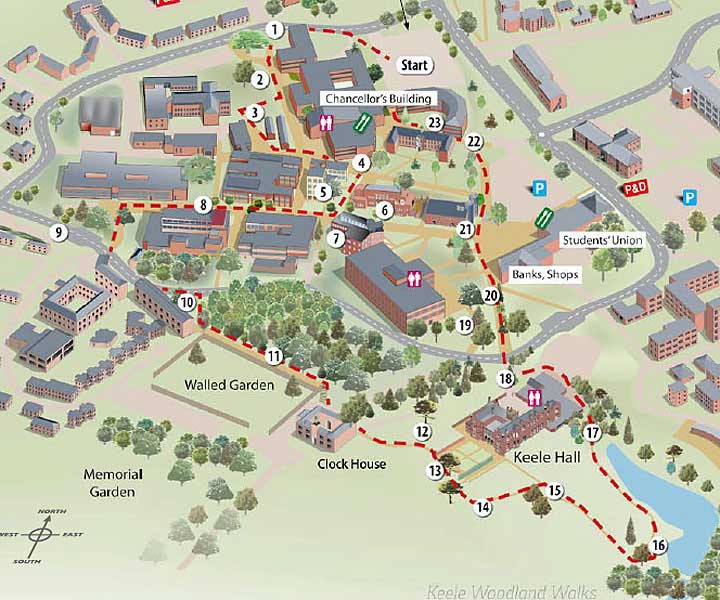Campus Nature Trail
Stop 10

Here we find the largest Sweet Chestnut on campus with a girth of over 5m. It is part of a 400 year old avenue which extends along the Terrace (stop 11) and is all that remains of the driveway of the first Keele Hall built in Elizabethan times.

 Immediately where the path from the Terrace meets the ring road is a Lucombe Oak Quercus x hispanica. This derives from a cross between the Turkey Oak Q. cerris and the Cork Oak Q. suber that originated in Lucombe's nursery in Exeter in 1763 and 1830. Our tree is a grafted specimen, the graft line being visible a few feet from the ground. Unlike the other oaks at Keele, this one keeps its leaves throughout the winter. Our tree is "type B", the commonest form outside of Exeter.
Immediately where the path from the Terrace meets the ring road is a Lucombe Oak Quercus x hispanica. This derives from a cross between the Turkey Oak Q. cerris and the Cork Oak Q. suber that originated in Lucombe's nursery in Exeter in 1763 and 1830. Our tree is a grafted specimen, the graft line being visible a few feet from the ground. Unlike the other oaks at Keele, this one keeps its leaves throughout the winter. Our tree is "type B", the commonest form outside of Exeter.
By the track to the Terrace (behind the camera) is a mature Turkey Oak Quercus cerris. This tree from southern Europe behaves like a native species now. It was introduced by J. Lucombe in 1735.
It grows very fast and straight but the timber is brittle and of no use. Its other name of "Mossy Cup Oak" relates to the acorn cups which are covered in short "whiskers" unlike those our two native oaks. The leaves are rather leathery and slightly longer and narrower than our oaks too.


